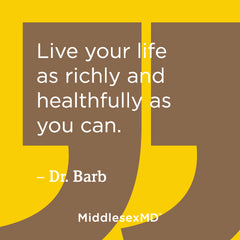It’s October. That means, yes, Halloween and fall color, the harvest moon, pumpkins, and apples. Also breast cancer awareness. Not necessarily in that order.
To recognize that dubious distinction, let’s review some breast cancer basics, beginning with the most important of the known risk factors that you may (or may not) be able to do anything about. In this case, knowledge is, if not power, at least awareness.
We’ve all lost friends and relatives to breast cancer. Maybe we’ve even had it ourselves. That’s because breast cancer remains the most common cancer for women. Fortunately, we’ve seen some advances in screening and treatment methods, but still one in eight of us (12 percent) will be diagnosed with breast cancer sometime in our lives, and one in thirty-six (3 percent) will die from it.
The good news is that breast cancer rates have been going down since 1989 (although they’ve stabilized lately). Still, every year almost 245,000 new cases are diagnosed and 40,890 women die from it.
 We all carry risk factors for breast cancer, but there are very few absolutes when it comes to who actually gets the disease. Some high-risk women never get cancer while others with a very low risk profile do. The two most universal and unavoidable risk factors are being a woman and getting older. Although about 2,000 men are diagnosed with breast cancer every year, it’s overwhelmingly a female disease. It’s also largely a malady of older women. Two-thirds of invasive cancers are found in women over 55.
We all carry risk factors for breast cancer, but there are very few absolutes when it comes to who actually gets the disease. Some high-risk women never get cancer while others with a very low risk profile do. The two most universal and unavoidable risk factors are being a woman and getting older. Although about 2,000 men are diagnosed with breast cancer every year, it’s overwhelmingly a female disease. It’s also largely a malady of older women. Two-thirds of invasive cancers are found in women over 55.
Genetics is, of course, a factor, but it may be less significant than we think. Most women (eight in ten) with some genetic predisposition to breast cancer never get it. However, the more genetic factors you have, the higher the risk. So, if you have several genetic risk factors, your chances of diagnosis increase. The most significant genetic factors are:
- Close relatives (mother, sister, daughter) with breast cancer
- Relatives with other cancers in your family
- Some genetic mutations, notably in the BRCA1 and BRCA2 gene.
Other risks that we can’t control include:
- Early menstruation and/or late menopause increase our lifetime exposure to estrogen and progesterone, while having children and breastfeeding are protective factors.
- Dense breast tissue. This means that the breast has less fatty tissue and more glandular and fibrous tissue. Not only do extremely dense breasts have a slightly higher cancer risk, but screenings may be less effective and early cancer harder to detect. A discussion with your health care provider will help you understand which category includes you.
- Race and ethnicity are slightly significant: White women have higher rates of breast cancer, but African-American women are more likely to die from it. Asian, Hispanic, and Native American women are at lower risk for both.
Some risk factors for breast cancer have more to do with lifestyle and treatment choices—and these are factors we can control. These lifestyle choices impact our health and quality of life in a whole bunch of ways, so it’s important to pay attention to them.
- Obesity. Fat cells release estrone, a type of estrogen, which raises hormonal levels in post-menopausal women.
- Alcohol consumption. According to cancer.org, two to five alcoholic (any type of alcohol) drinks daily increases the risk of breast (and other) cancer by 1.5 percent compared to women who don’t drink. Cancer surgeon Dr. Jane Pettinga writes, “… alcohol reduction [is] the only dietary change that has science solidly behind it.”
- Sedentary lifestyle. Evidence is growing that regular physical exercise reduces risk. To reduce breast cancer risk, the American Cancer Society recommends at least 150 minutes of moderate intensity or 75 minutes of vigorous intensity activity each week.
- Exposure to radiation. This doesn’t refer to the X-rays you get at the dentist’s office. Women who have had radiation treatment to the chest or face before age 30 for treatment of other cancer (like Hodgkins, which makes up the vast majority of young women who’ve had chest wall radiation), for example, are at higher risk.
Cancer is complex and multi-faceted. One risk factor doesn’t--or even several risk factors don’t inevitably equal cancer. There are gradations and mitigating factors and a whole lot of unknowns. Some things, such as exposure to certain chemicals, are considered “emerging risks,” which may or may not hold up under research, while others, such as wearing an underwire bra, have absolutely no supporting evidence.
I think the best approach is to understand your risk profile, but then live your life as richly and healthfully as you can. The most important thing you can do, bar none, is to maintain a healthy lifestyle (more on this in the next post). Then review your plan for screening every year--and follow through.
 Dr. Barb DePree, M.D., has been a gynecologist and women’s health provider for almost 30 years and a menopause care specialist for the past ten.
Dr. Barb DePree, M.D., has been a gynecologist and women’s health provider for almost 30 years and a menopause care specialist for the past ten.


0 comments